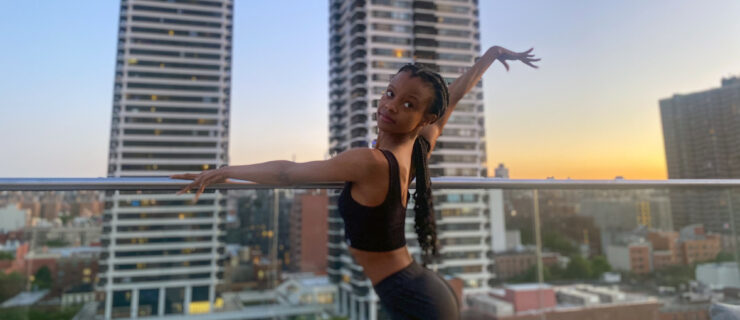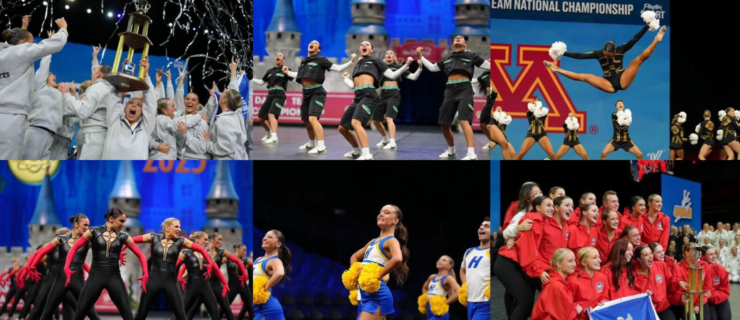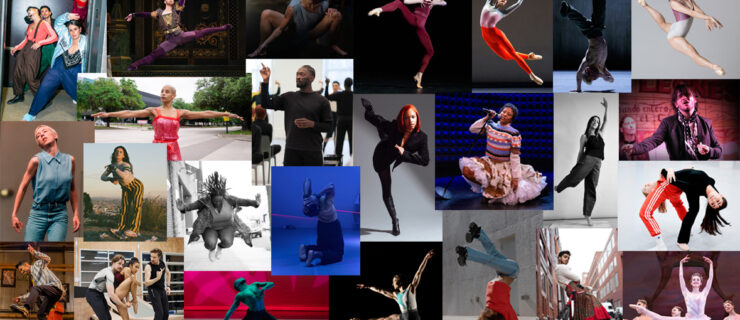Sisters Emily and Elizabeth Dell Capture Dance on Film
When sibling filmmakers Elizabeth and Emily Dell roomed together at UC Berkeley, they were on different paths, majoring in public health and biology, respectively. Though Emily had dreamed of directing movies since age 16, it wasn’t until she studied filmmaking at NYU’s Tisch School of the Arts during summers that her creative drive inspired Elizabeth to get on board. Today, Emily, who writes and directs, and Elizabeth, who produces, are busy promoting their 15-minute film B-Girl, a story of a breakdancer named Angel (played by Lady Jules) struggling to get it together before a big competition. They’re now working to secure funding to make a feature-length version.
The sisters aren’t dancers themselves, but when they visited San Francisco’s Mission Street Fair in August 2002, they were inspired by a b-girl crew called the Sisterz of the Underground. B-Girl is playing internationally; last fall, it won the Audience Award at the H20 Hip Hop Odyssey Film Fest in NYC.
Skills Needed:
“Filmmaking is something you learn as you go. It’s very much an apprenticeship,” Elizabeth says. Both agree that all aspiring filmmakers should have passion, commitment and organization. A degree in film isn’t necessary, but knowledge of the biz will put you a step ahead. “School is an advantage, but it’s just a forum for you to learn the practical skills you can also learn on your own,” Emily says.
Hours:
The industry’s standard day is 12 hours, but the Dell sisters say they work for upwards of 14 hours. They were the first ones on set at 6:30 am, to plan out the day’s shooting schedule, and the last ones to leave. B-Girl took about a year to make from conception to finished product, and the sisters estimate the feature film will take about two years. The work doesn’t stop after a film wraps; Elizabeth continually works on distributing B-Girl to festivals and selling the DVD at breaking events, screenings and through its website, bgirlmovie.com.
Tools of the Trade:
Camera, script, lights, sets and precision dancers. The final five-minute breakdancing scene in B-Girl took an entire 12-hour day to shoot, because the dancers had to repeat choreography exactly the same as the previous shot while the camera people changed angles. “I just can’t give enough props to our dancers, who did some really incredible dancing again and again for us,” Elizabeth says.
Co-workers:
Director of photography, production designer, assistant director, camera people, editors, wardrobe designers, makeup artists, actors, dancers.
Funding:
“Money is always a problem, because movies are really expensive,” Emily says. The budget for B-Girl was $23,000, gathered from private foundations, donations and sponsorship from a nonprofit organization. Many of the dancers were so passionate about the film that they worked for free. As the producer, Elizabeth’s primary function during pre-production (the planning phase before filming begins) was to fundraise. “Any dancer or dance group knows you need to be really creative about who can help you in the process, where you can reach out and where the community can step in,” she says. Money worries are common in the industry, and Elizabeth admits raising money is her least favorite part of the job. But “to have an exciting vision and no way to fund it is the worst feeling,” she says.
Research:
The Dells nabbed b-boys and b-girls from all over California, then interviewed them to compile the plotline. In December 2002, Lady Jules, known for her Gap commercial and music video breakdancing, also shared her stories with Elizabeth and Emily in a pre-B-Girl interview. In fact, the actual character of Angel encompasses some aspects of Jules’ life.



